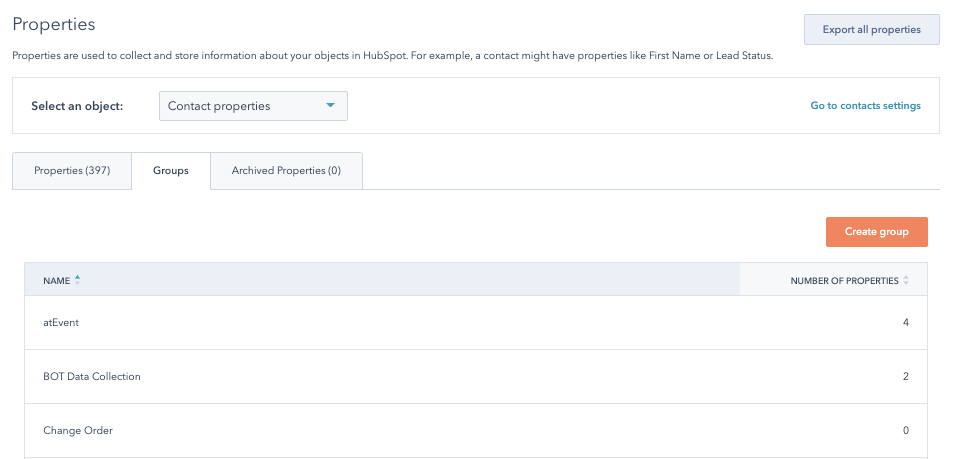5 Ways to Combat Bad Data in B2B Marketing: An Actionable HubSpot CRM Cleanup Plan (Bad CTA)

There’s nothing quite like trying to unravel a CRM full of messy data.
One of the biggest data challenges we hear from clients regularly is the struggle of keeping data clean and maintaining a process of regular updates – just like we do with other areas in our lives.
I recently decided it was time to go through my house and think about what’s most important to me, and what it’s time to let go of (and I know Marie Kondo would be proud). The same goes for data in your Customer Relationship Management tool; if you keep things organized and tidy along the way, it makes your life a lot easier in the long run.
Unfortunately, we can get into bad habits of stuffing things in places they don’t belong to save time at the moment, and later find ourselves saying things like:
-
WHERE IS THAT SWEATER THAT I LOVE?
-
WHERE IS THAT MQL LIST FROM LAST QUARTER?
In the end, it isn’t going to help you when you need something quickly. And the longer you let data run free, the more tangled and wild it becomes.
On the flip side, having accurate and up-to-date information in your CRM is important for key stakeholders across teams to have visibility into what’s happening, whether that be in sales, marketing, service, or operations.
It’s time to clean out the data closets in your CRM – and here’s how.
What Are Your Current Data Challenges?
First, you need to determine what your greatest challenges are when it comes to clean CRM data.
If you don’t have a CRM yet, you need one.
-
Establishing a CRM requires alignment and buy-in from team members across your organization, so you’ll have to navigate change management, but it will be well worth it in the end due to its benefits for marketing, sales, and other internal teams.
-
Since we’re HubSpot superfans, we’re focusing on how to clean and maintain your HubSpot CRM.
Turnover and lack of process can lead to bad data in CRMs.
-
Whether it’s turnover internally or a lack of regular updates from the marketing and sales teams, if you don’t have a process, it will lead to bloated, inconsistent, and unaligned data.
Fragmented teams can lead to data mapping into different fields.
-
Data can enter a CRM through a variety of ways; make sure you’re tracking all of those and that your teams are aligned on best practices. Here are a few:
-
Imports from sales
-
Imports from marketing
-
Forms
-
Chatbots
-
Tickets
-
Lack of process in properties and automation leads to more trouble.
-
If teams don’t have a centralized, digestible, and repeatable process in place around what properties matter and what triggers automation or events, you can end up with a CRM with duplicated or missed data. For example: contacts are auto-partitioned into a list based on country, but you have two or three different country fields, which causes inconsistencies with your lists.
-
Another example: sales assign companies to account owners based on revenue, but marketing is blind to this and loads new associated accounts for emails without revenue data (more reasons why sales and marketing alignment is crucial!)
-
Untangle Your CRM in an Actionable Way
1) Standardization and Communication: Establish a Process
Get all of your teams aligned by communicating upcoming process changes. Ensure that this will help them have cleaner data and be able to perform their jobs better.
-
Make sure you establish a process with the sales/BD and marketing teams to define a standard way to enter data.
-
Log and record your new standard processes in a central location, like a shared knowledge base, so that everyone can find it easily.
2) Demolish Duplications
The first step to new processes is cleaning out the duplicates that you already have that are muddying the data.
It’s called de-duplication (fun, to say, right?), which means getting rid of duplicate information in properties or other areas of your CRM.
You’ll need to review and audit all current properties. If you’re using HubSpot, you have the option to export all property fields to see them in one place.
-
Within HubSpot, you can run automation to deduplicate contacts so that it doesn’t have to be a manual process.
-
You can also use an intuitive third-party tool like Dedupely to merge duplicates in bulk from contacts, companies, and deals in HubSpot.
3) Sharpen Segmentation
Next, it’s time to really dig deep and clean out your contact list. The more you can clean up and segment your prospect and customer lists, the more you will be able to personalize your tactics and increase engagement.
-
Use active lists to identify test contacts, fake email addresses, or unengaged contacts.
-
Implement customer segmentation models to tailor content to unique needs and challenges.
4) Refine Fields and Limit Choices
Now it’s time to audit your CRM fields. Wherever possible, avoid establishing ‘single line text’ or free text fields so that data will be more useful and consistent.
I like to approach this process by thinking about how future teams may use the data.
- For example, your sales team may need to easily find eligible leads in North Carolina.
- This task becomes much more straightforward if state information is set up as a dropdown with one choice for each state.
- Otherwise, your team is sifting through free response answers based on how users submit forms. You'll see abbreviations, inconsistencies, typos, etc.
Create standardized dropdowns, multiple select options, and other clearly defined fields to ensure consistency and build automation that guarantees eligible records don’t fall through the cracks.
When these standards are established up front, you help save your teams, and users, time and effort.
5) Champion Excellence: Maintain a Routine
Finally, remember to rinse and repeat regularly so that you don’t allow bad data to pile up again.
Tips for CRM maintenance and timing:
-
Internally establish a recurring process that brings in key stakeholders
-
Share wins and improvements with your team
-
Create a system to help identify and flag uncategorized contacts and companies
-
Set up a time to clean – every 3 months is a good starting goal, but this may vary
-
Utilize HubSpot property groups for campaigns and initiatives. If you’re building custom properties and data fields, ensure that they are marked and affiliated with a central campaign to keep your CRM organized and accessible

Once you’ve established processes and you’re consistent in maintaining them, you’ll have a squeaky-clean CRM that’s more useful for segmentation, personalization, and all the other nerdy things that marketers like us love – because it’s all about creating a better customer experience, from first touch to longstanding client interactions.
Once you’re confident in the quality of your existing data, you can begin to strategically build and supplement!

